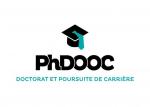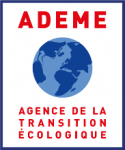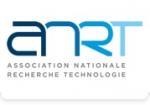Probing phonon attenuation in a nanophononic SiC membrane: a Brillouin Light Scattering investigation
| ABG-133824 | Master internship | 6 months | 660€ |
| 2025-10-14 |
- Physics
- Materials science
Employer organisation
Research Environment
You will integrate the Transport, Nanomagnetism and Materials for Energy (in short, Energy) team at the Institute Lumière Matière. Our group specializes in the microscopic investigation of thermal and electronic transport, combining advanced spectroscopy with macroscopic measurements. You will work closely with Valentina Giordano, who leads research on thermal transport in nanostructured materials, and Jérémie Margueritat (Luminescence team @iLM), an expert in light-matter interactions at the nanoscale. The internship will also involve collaboration with iLMTech, our technological platform, and particularly its Transport pole.
The Energy team offers a collaborative and supportive environment, with regular group meetings and access to state-of-the-art facilities.
Description
SCIENTIFIC CONTEXT :
Nanostructured materials are currently at the forefront of research for thermal management in fields such as thermoelectric energy harvesting, photocatalysis, and microelectronics. In thermal science, nanostructuring makes it possible to control heat transport by acting directly on heat carriers, the phonons, which are scattered by interfaces at the nanoscale, as the length scale is comparable to their characteristic lengths (wavelength and mean free path). When interfaces are periodic (e.g. in nanophononic materials), phonons may even interfere with their own reflections, with major consequences on heat transport.However, this thermal engineering poses new challenges, not only from a technological point of view, but also from a fundamental understanding point of view, as theories are still being developed and can only be based on very little experimental data.This master project aims to deepen our understanding of phonon dynamics in nanophononic materials, which is crucial for optimizing their design for energy applications.Recently, we used the transient grating technique at the Free Electron Laser (FEL) to measure phonons with wavelengths between 55 and 100 nm in a SiN membrane patterned with a periodic lattice of holes (nanophononic). We discovered that interference between a phonon and its reflections dramatically reduces its lifetime and alters its nature [1]. Our calculations predict a maximum lifetime reduction at longer wavelengths, comparable to the period of the holes’ pattern, when phonons should be trapped between the holes.To explore phonons with wavelengths matching the nanostructure lengthscale (300-1000 nm), we will use surface Brillouin Light Scattering (sBLS). Previous experiments on SiN membranes revealed the modification of phonon dispersions due to the nanostructuration, but were limited by instrumental resolution, so that we could not measure phonon lifetime.
We now propose to setup an advanced optical scheme to improve resolution and investigate a SiC nanophononic membrane, where phonon lifetimes are expected to be more accessible, due to the larger anharmonicity.
Mission:
You will join a dynamic research effort to study phonon dynamics in nanophononic materials. Your mission will include:1) Characterizing phonon dispersion and linewidth in a standard silicon sample using ourcurrent sBLS setup2) Developing and validating a new optical scheme to enhance instrumental resolution,with support from our technical team.3) Investigating phonon dynamics in 2 SiC membranes: i) a uniform and ii) ananophononic membrane, as a function of temperature, to disentangle anharmonicand nanostructure-induced effects on phonon lifetime.Through this internship, you will gain hands-on experience in:- Advanced optical spectroscopy (Brillouin Light Scattering)- Data analysis and interpretation- Collaboration with experimentalists and theoristsYour results will contribute to understand phonon dynamics and thermal transport in nanophononic materials to optimize their design depending on the application.
[1] M. Hadi et al., Nat. Comm. 15, 1317 (2024).
Profile
The candidate is required to have good grades, a very a good knowledge in the domain of solid-state physics, as well as being interested and curious to work with material science.
Outstanding candidates have the opportunity to continue with a PhD, subject to funding availability.
Starting date
Vous avez déjà un compte ?
Nouvel utilisateur ?
Get ABG’s monthly newsletters including news, job offers, grants & fellowships and a selection of relevant events…
Discover our members
 CESI
CESI  TotalEnergies
TotalEnergies  CASDEN
CASDEN  Ifremer
Ifremer  PhDOOC
PhDOOC  MabDesign
MabDesign  Institut Sup'biotech de Paris
Institut Sup'biotech de Paris  ADEME
ADEME  ONERA - The French Aerospace Lab
ONERA - The French Aerospace Lab  ASNR - Autorité de sûreté nucléaire et de radioprotection - Siège
ASNR - Autorité de sûreté nucléaire et de radioprotection - Siège  Laboratoire National de Métrologie et d'Essais - LNE
Laboratoire National de Métrologie et d'Essais - LNE  Nokia Bell Labs France
Nokia Bell Labs France  Généthon
Généthon  Groupe AFNOR - Association française de normalisation
Groupe AFNOR - Association française de normalisation  Aérocentre, Pôle d'excellence régional
Aérocentre, Pôle d'excellence régional  ANRT
ANRT  Tecknowmetrix
Tecknowmetrix  MabDesign
MabDesign  SUEZ
SUEZ
